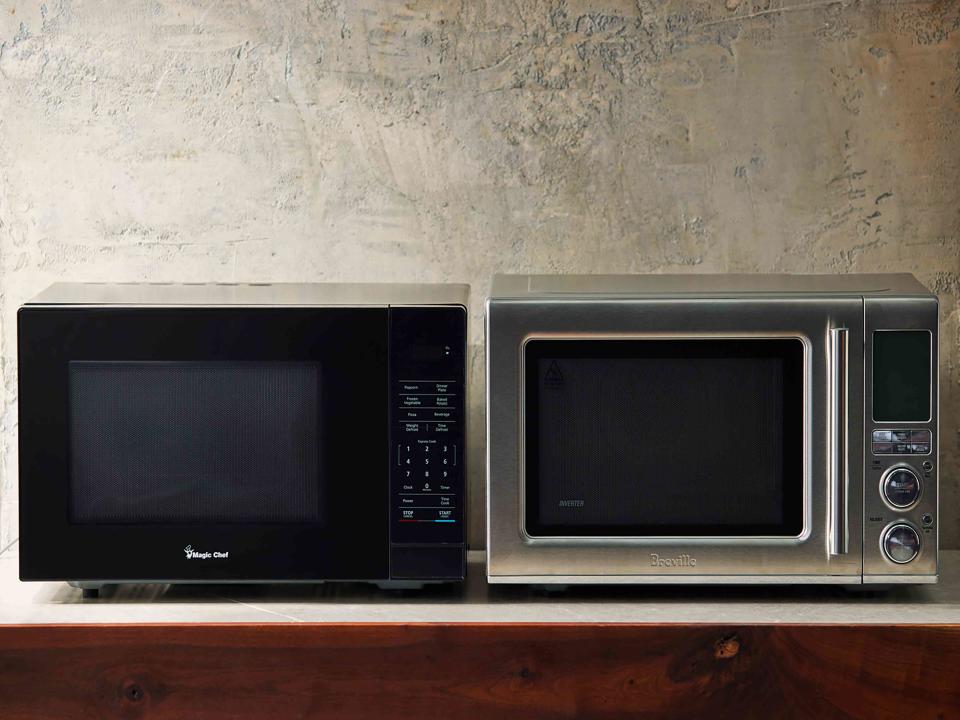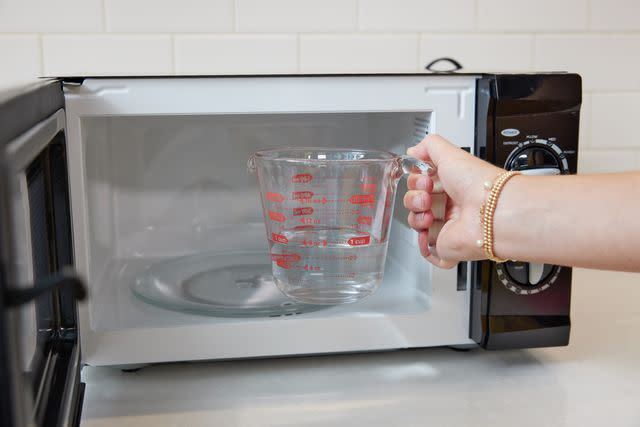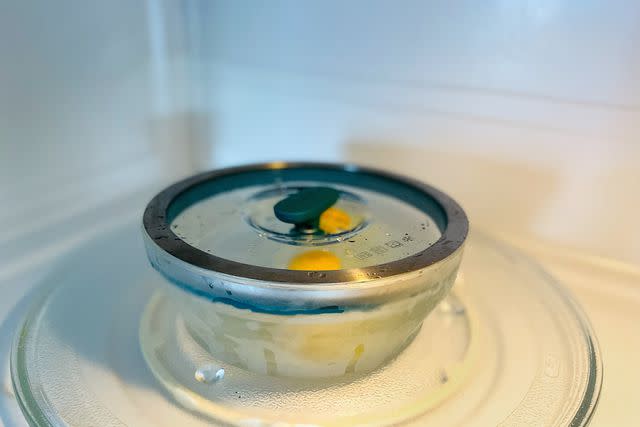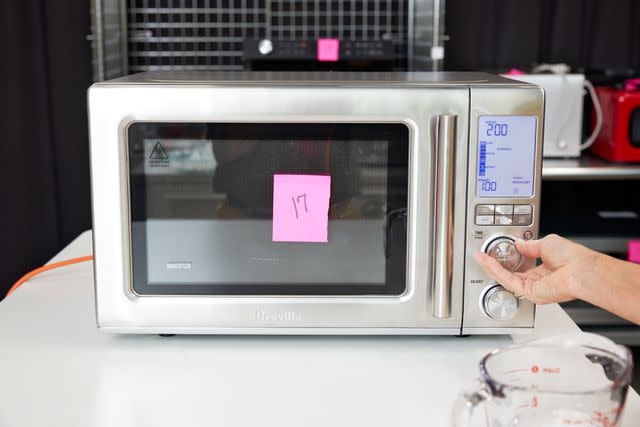Everything (Important) You Need to Know About Microwaves
- Oops!Something went wrong.Please try again later.
Dotdash Meredith and Yahoo Inc. may earn commission or revenue on some items through the links below.
Including how they work and if wattage really matters.

Serious Eats / Russell Kilgore
The humble microwave—ubiquitous in office break rooms, hotel lobbies, and probably your own kitchen—is nothing if not convenient. After all, it’s a box in which you can put last night’s leftovers (or a frozen burrito; no judgment here), push a couple of buttons, and wait for the magic of electromagnetism to bring your food back to life within minutes. Pretty cool!
But what actually is a microwave oven and how does it work? Well, it all begins with a guy named Percy who accidentally cooked a candy bar in his pocket.
A Tale as Old as Time: A Brief History of the Microwave
OK, so, it’s 1946. Percy Spencer is an engineer working for a magnetron company called Raytheon, and one day he’s hanging out in the radar lab when he notices that the snack he’d stashed in his pocket is getting awfully warm.
Spencer experiments with bringing popcorn and eggs into the lab over the next couple of days. It doesn’t take him long to understand that active magnetrons have the power to cook food—and quickly at that. He files some patents and the rest, they say, is history.
What Is a Microwave?

Serious Eats / Will Dickey
The appliance we know and love is a type of oven. Microwaves are the actual electromagnetic waves generated in magnetrons, and they get zapped around inside the confines of the oven—hence the ingeniously named microwave oven.
Microwaves work by reflecting off of the metal surfaces inside the oven, and the food you’ve placed inside absorbs those waves. The FDA simplifies it by stating that “microwaves cause water molecules in food to vibrate, producing heat that cooks the food.”
This is also why, while relatively fast-acting, microwaves often yield food that is unevenly warmed. The inner depths of, say, a Hot Pocket or a bowl of soup just can’t absorb microwaves as readily as the outer layers.
Does Wattage Matter?
Toshiba EM131A5C-BS Microwave Oven with Smart Sensor

Magic Chef 1.1 Cu. Ft. Countertop Microwave HMM1110

Most modern microwave ovens operate between 600 and 1000 watts (and some higher than that), with the latter being the standard full-power number today. In general, a microwave with more watts is more powerful and will have faster cook (or heat) times.
Wattage also refers to the rate of electricity consumption, and microwaves are quite efficient. The average cost is about $10 per year, and that’s if you’re operating your microwave for 15 minutes a day.
What You Can (and Can’t) Put in the Microwave

Serious Eats / Abigail Clarkin
Despite their efficiency and ease of use, microwave ovens aren’t suitable for every kitchen context. Here’s what you can microwave safely:
Glass and ceramics; though it’s best to avoid crystal, pottery, or anything handpainted
Reusable plastics; which means yes to storage containers, no to that old yogurt tub you rinsed out three months ago
Paper plates, paper towels, and napkins
Food storage bags
And here’s what you can’t microwave safely:
Metal, including aluminum foil*
Cardboard, which may contain adhesives or waxes
Styrofoam, unless it’s labeled as microwave-safe
*Technology has advanced and the age-old wisdom to avoid putting metal in the microwave isn’t necessarily still always accurate. The metal rings on Anyday microwave-safe cookware, for example, are totally fine to go in the microwave, because the metal used is thick and smooth enough to reflect the microwaves instead of arcing—which is what may happen if you were to heat a fork.
When in doubt, look for labels. Most serving ware, cookware, and storage vessels will have some indication as to whether they're microwave-safe or not.
What About Microwave Oven Presets?

Serious Eats / Will Dickey
Lots of microwaves have special buttons for preset cooking modes—like the classic popcorn button. In truth, though, these presets usually aren’t worth getting excited about. They’re just preselected time and wattage levels that may or may not be adequate for the specific food or beverage you’re trying to heat.
What is useful, though, are the different power levels. Let’s say your microwave’s default is 1000 watts—that’s full power. Use it for the fastest heating, ideally with high water content foods such as soups and stews. For a small portion or a finicky ingredient (softening butter, perhaps), you might want to drop the power level down to 500 watts to avoid an exploding mess. Whirlpool has a great guide on microwave oven power levels. Understanding how to adjust these settings can help you make the most of your appliance.
Again, most microwaves on sale today will run at around 1000 watts out of the box, which is plenty (and you can adjust it). Buy according to size and your budget—not the number of presets.
What Can You Cook in a Microwave?

Serious Eats / Abigail Clarkin
Cooking with a microwave may not feel as lavish as firing up your conventional oven, but these little boxes can sure be handy—especially when you're short on time (or, let’s be honest, motivation).
On this very site, we have recipes for things like fried garlic and shallots, rice, and chocolate cake all cooked in the microwave. You can even toast nuts in one.
Alternatively, there is microwave-specific cookware out there as well, like this set we reviewed from Anyday. Their website features entire meals you can cook in the microwave, like sloppy joes and coconut lime shrimp. You can even be that person who puts fish in the microwave.
FAQs
How long should a microwave last?
As long as you’re not using it to heat metal objects, your microwave can easily last for seven to 10 years. You’ll know it may be singing on the last note if you notice weird sounds, smells, or foods that are improperly cooked. Or if it doesn’t actually heat your food up, which we’ve had happen.
What is a good wattage for a microwave?
As we covered above, 1000 or more watts is ideal for modern microwaving needs.
What are the different sizes of microwaves?
Microwave ovens generally range from 0.5 to 2.0 cubic feet in size. The smallest models will be countertop microwaves.
What are the different types of microwaves?
You can find countertop, over-the-range, and built-in microwaves. Countertop models can plug in anywhere with a suitable outlet—perfect for small spaces, offices, and so on. Over-the-range microwaves will be installed above your stovetop and feature a venting mechanism, while built-in microwaves are designed to integrate with surrounding cabinetry.
Read More:Which Vitamix Blender Should You Buy? We Compared (Almost) All of Them

